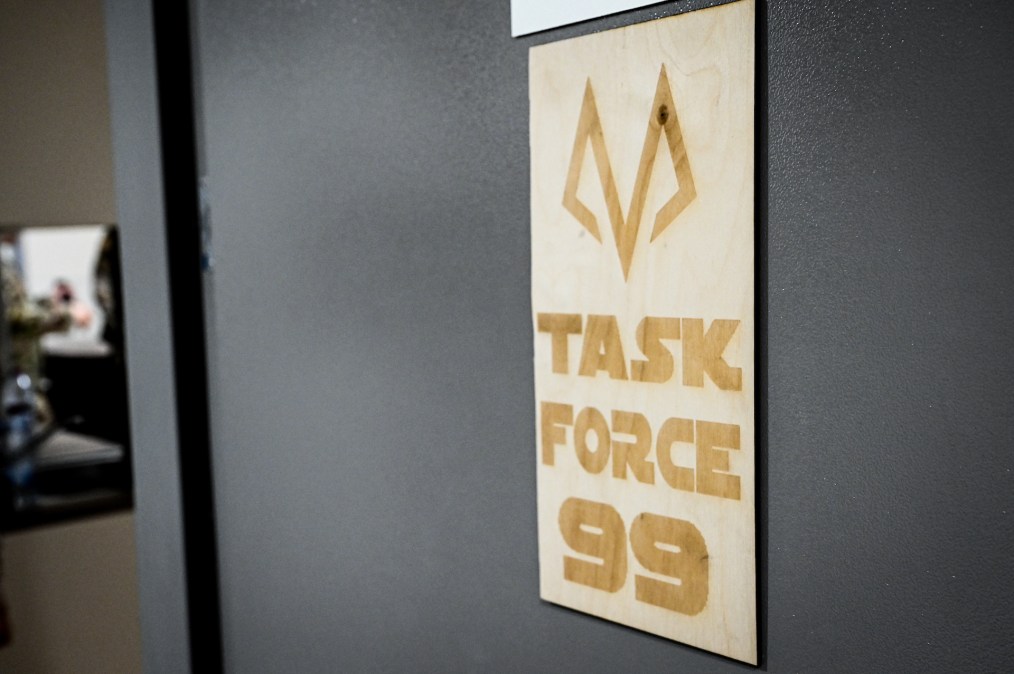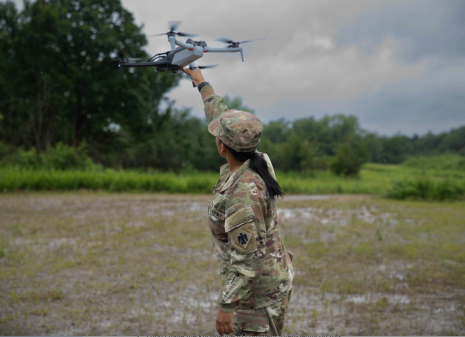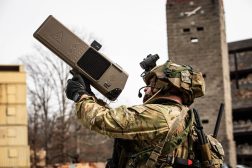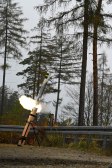Task Force 99 drone was ‘very effective’ in secretive spy missions, senior DOD official says

An unmanned aerial system from U.S. Air Forces Central’s newly formed Task Force 99 was deployed to conduct intelligence, surveillance and reconnaissance missions against a U.S. adversary in the Middle East — and its performance was “very effective,” according to a senior Department of Defense official.
The task force was stood up in October at Al Udeid Air Base, Qatar, as the Pentagon looks for new ways to operationally evaluate robotic platforms and supporting technologies.
During a meeting with reporters at the Pentagon on Friday, the senior DOD official identified Russia, China and Iran as competitors in the region that the U.S. military is concerned about, noting that the Pentagon is also combating the ISIS terrorist group in Syria.
“We have used a drone capability from Task Force 99 to do ISR. I won’t tell you what we were doing it against. But we have used a drone from Task Force 99 to do ISR. We have plans to do others in the future. I don’t want to give up too much detail on it so that they can figure out where we were using it and who were using it against. But it was very effective. A very different mode of doing ISR than a, you know, an MQ-9 [large Reaper drone] that’s parked overhead constantly looking at things. But Task Force 99 does have actual operational capability that we’re putting into the field, absolutely,” the official told DefenseScoop during the meeting on condition of anonymity under ground rules set by the DOD.
Earlier this year, Col. Rob Smoker, commander of the task force, told DefenseScoop in an interview that the unit was mostly experimenting with smaller systems that fall into the Group 1 and Group 2 part of the UAS spectrum.
However, the organization has “a fairly broad inventory right now,” a senior DOD official told reporters during Friday’s meeting.
“We’re up to probably a dozen-and-a-half drones or so that they have in their inventory. And they range everything from small, short-range UAS to slightly larger, you know, large Group 2 to small Group 3 with, you know, 500-kilometer range type UAS. So there’s a wide variety of platforms and a wide variety of payloads that you could put on those from ISR to kinetic payloads, etc.,” they said.
The official clarified that the the task force has about one-and-half dozen drones, but he didn’t disclose which model or models have been used operationally.
“Some of them they actually 3D print, so they could be halfway through 3D printing one now,” the official added.






